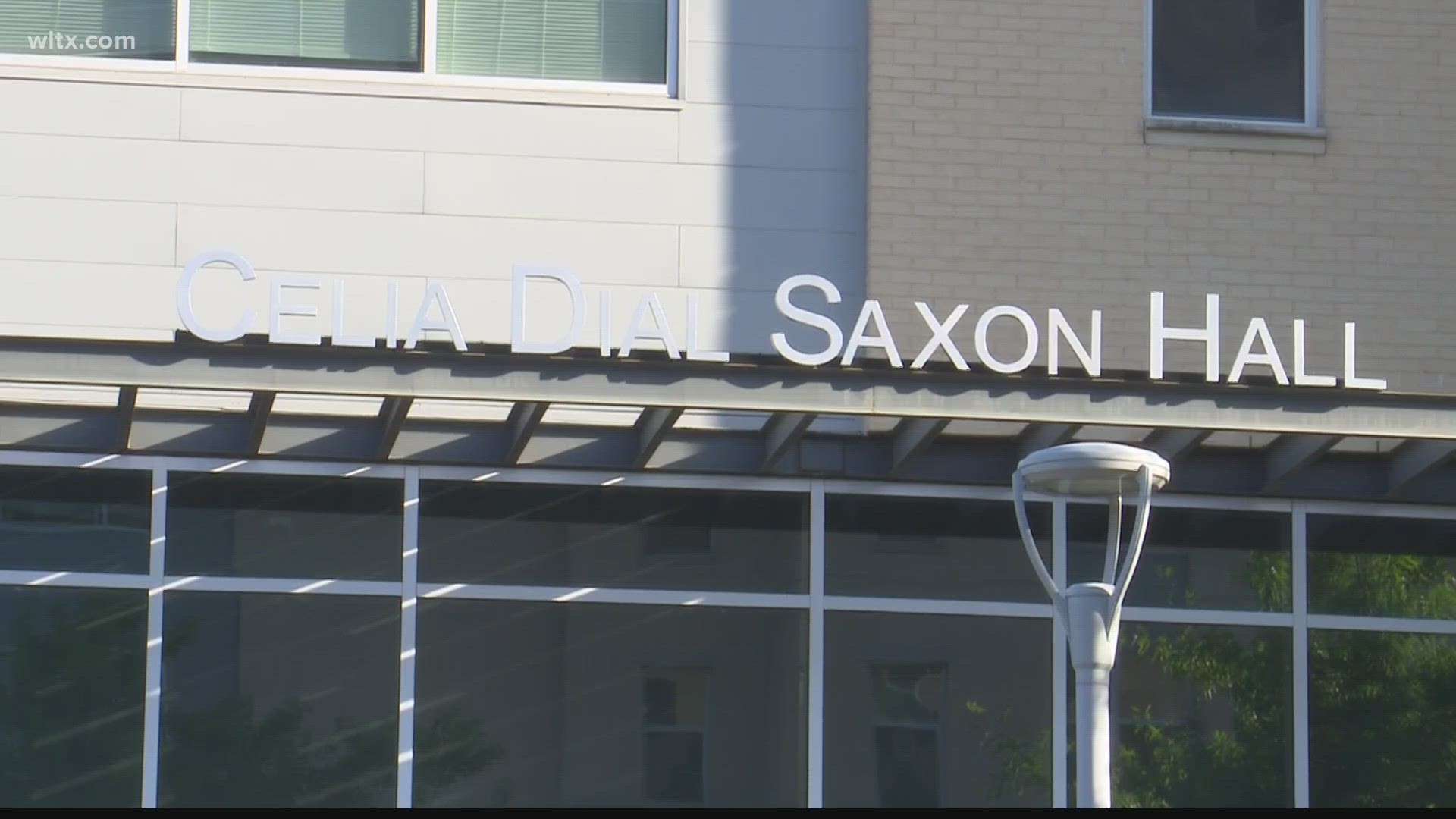COLUMBIA, S.C. — Celia Dial Saxon (nee Celia Emma Dial) was born in Columbia, South Carolina in 1857. She was one of the first African American students to attend the South Carolina Normal School, which was established by the SC General Assembly during Reconstruction in 1873 and opened on the campus of University of South Carolina in 1874.
After graduation, Saxon went on to a 57-year career as an educator, teaching at Booker T. Washington High School, Benedict College, and South Carolina A&M College. Over the years she influenced generations of Black students and spent her life working to provide educational and financial resources for African Americans in the state, and to advance the rights of women and girls.
The University of South Carolina honored Saxon by naming the residence hall at 700 Lincoln St. after her. The Celia Dial Saxon Hall is the first building on the Columbia campus to be named after an African American.
The building sits adjacent to the historic Ward One District -- a downtown neighborhood that was lost to urban renewal projects in the 1950s and 1960s -- that was home to an elementary school named after Saxon.
Celia Dial Saxon Hall is a seven-story building that houses 297 students in apartment-style suites. It opened in 2016.
“With this dedication we are taking another step forward in the university’s ongoing efforts to acknowledge and reconcile difficult pieces of our past,” said USC President Michael Amiridis.
The school is involved in an ongoing effort to honor those who have been left out of the university's story and the renaming of the residence hall is the latest action. Other recent efforts to recognize those individuals who played a part in the University's past include:
- renovations to the former Booker T. Washington High School
- installation of two markers on the Horseshoe crediting the work of enslaved persons in the construction of the USC campus and landscape in 2017
- a statue to Richard T. Greener, the first Black professor at USC, was dedicated in 2018
- a historical marker on the Horseshoe was unveiled in January 2023 acknowledging the history of USC during Reconstruction
- the announcement of the site of the statue honoring Robert Anderson, Henrie Monteith Treadwell, and James Solomon Jr. -- who in 1963 were the first Black students admitted to the university since Reconstruction. A 12-foot bronze statue inspired by a Sept. 11, 1963, photograph of the three students exiting Osborne Administration building will be placed in the northeast section of the Horseshoe, in front of McKissick Museum.
Board of Trustees Chairman Thad Westbrook credited USC’s Presidential Commission on University History, which includes faculty members, trustees and administrators, for laying the groundwork for Friday’s building naming. Established in 2019, the commission explores ways to more broadly recognize forgotten, excluded, or marginalized groups and individuals who positively contributed to the establishment, maintenance, and growth of the university.
“The university has an obligation to tell the stories of the people that helped shape the campus and contributed to what our institution is today. Celia Dial Saxon’s legacy as a tireless champion for educational equality will undoubtedly serve as an inspiration for future generations of USC students,” Westbrook said.

